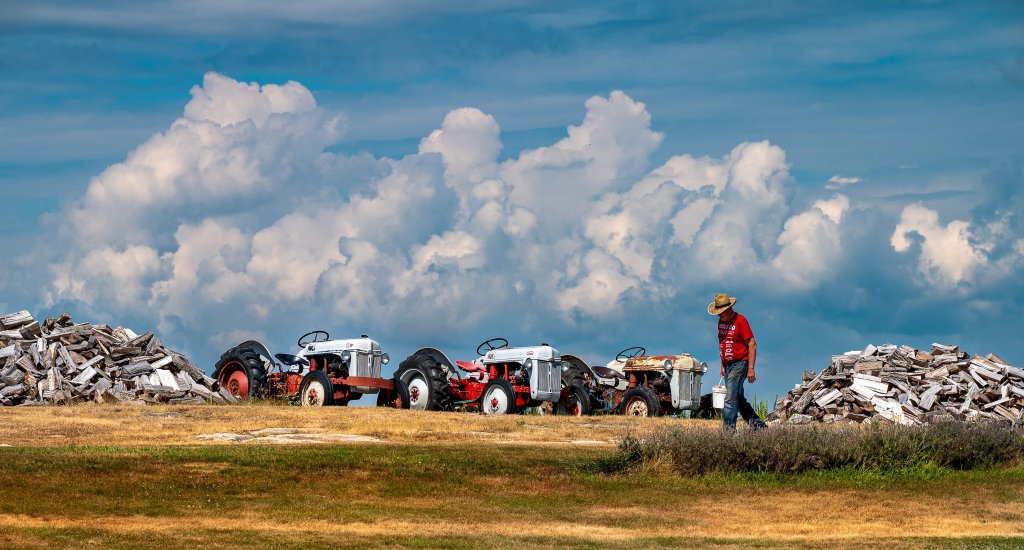
Reynard Gilbert returns from his garden Aug. 14 in Turner with a few string beans, cucumbers and a tomato. “This drought is awful,” he said. “Everything is burnt right up. But if the good Lord wants you to eat out of your garden, he’ll water it. If he don’t want you to, he’ll let it choke to death.” (Russ Dillingham/Staff Photographer)
Drought conditions have expanded in some parts of the state, and more of northern Maine is now abnormally dry, according to data released Thursday by the U.S. Drought Monitor.
Nearly 1.2 million Mainers live in drought areas, encompassing all of southern, western, central and Down East Maine. The conditions have contributed to an unusually high number of wildfires in August.
The coastal area now in severe drought has expanded in the past week and now encompasses about 11% of the state, stretching west from Washington County to the eastern half of Lincoln County and including Acadia National Park and the Bar Harbor area.
“The drought impacts continue to worsen across the state of Maine,” said Sarah Jamison, the service hydrologist with the National Weather Service in Gray. “We’re not anticipating any drought-busting rain in our forecast.”
Jamison said many areas of the state will get a quarter inch of rain on Friday and a few “lucky” areas could see as much as an inch. While the rain is welcome, she said, “it’s far from what we need to get out of the drought.” Friday’s rain will be followed by a dry stretch of weather, she said.
The drought conditions developed in a matter of weeks, due in part to weeks of dry weather and extreme heat. Forecasters said when drought conditions were first declared two weeks ago that they are likely to spread and worsen through the end of the month.
In a severe drought, air and water quality are typically poor, groundwater levels drop and irrigation ponds run dry. Some crops are affected in both yield and size, warnings are issued regarding outdoor burning, golf courses begin to conserve water, and trees become brittle, according to the drought monitor.

People and a dog walk through patches of dry, brown grass on Aug. 14 in Augusta’s Capitol Park. (Joe Phelan/Staff Photographer)
In moderate drought areas, wildfires and ground fires increase, honey production declines, hay and grain yields are lower than normal, and trees, landscaping and fish are stressed, according to the drought monitor. People may be asked to voluntarily conserve water because reservoir and lake levels are below normal capacity.
Wildfire danger is high across most of the state and moderate in far northern Maine. Authorities have restricted outdoor burning permits as the state grapples with the dry conditions.
There have been more than 200 wildfires across Maine in August, the highest number in the past 20 years, according to the Maine Forest Service.
“Because of drought conditions that have been building over the past several weeks, vegetation is showing signs of stress — even grass and other plants which are still green in August are capable of burning,” the forest service said in a Facebook post on Wednesday. “Some hardwoods have started to drop their leaves, which is several weeks earlier than normal.”

We invite you to add your comments. We encourage a thoughtful exchange of ideas and information on this website. By joining the conversation, you are agreeing to our commenting policy and terms of use. More information is found on our FAQs. You can modify your screen name here.
Comments are managed by our staff during regular business hours Monday through Friday as well as limited hours on Saturday and Sunday. Comments held for moderation outside of those hours may take longer to approve.
Join the Conversation
Please sign into your CentralMaine.com account to participate in conversations below. If you do not have an account, you can register or subscribe. Questions? Please see our FAQs.